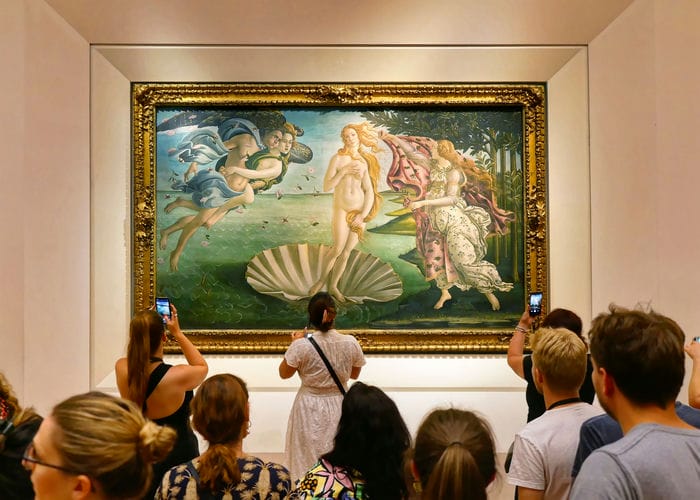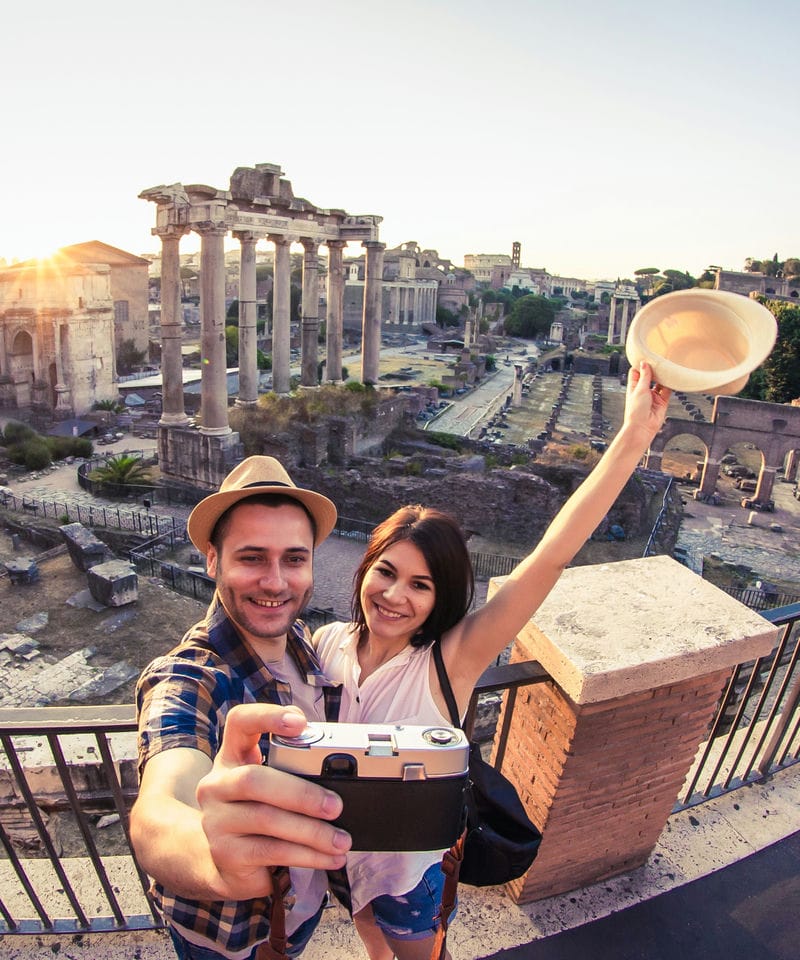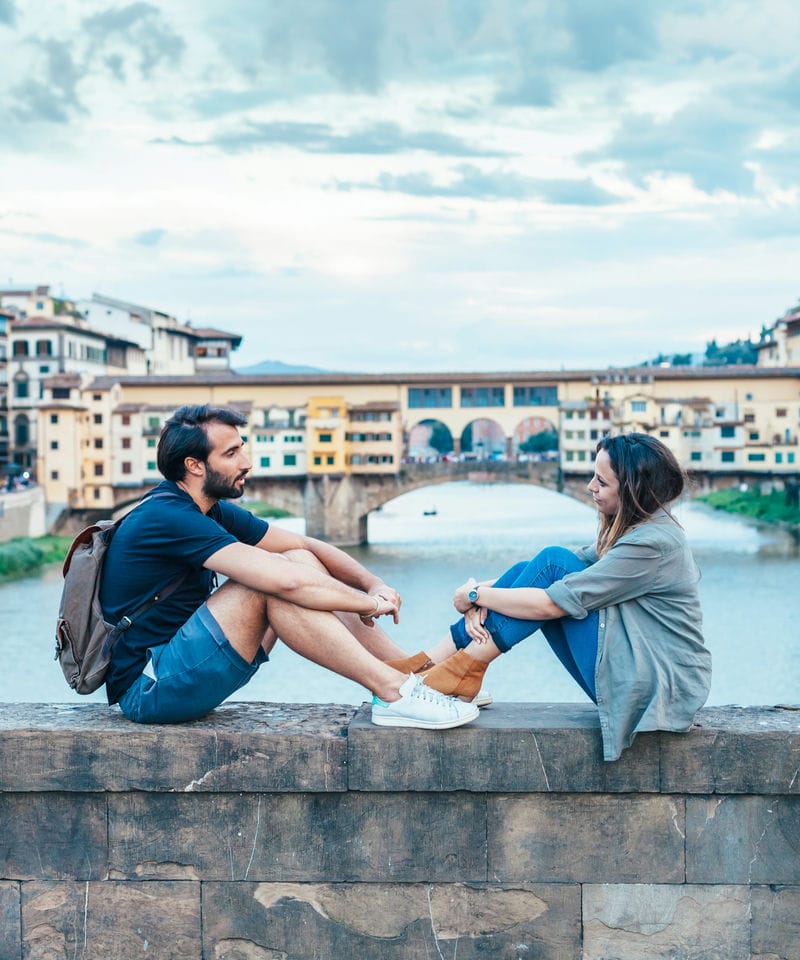
Top Things to Do in Florence: Unmissable Sights and Activities
Key Takeaways
- There are the top things to do in Florence whether your interests include history, architecture, gastronomy, or just plain fun!
- Visit iconic sites like the Duomo and Michelangelo's David
- Enjoy Florence's vibrant markets and picturesque streets
- Explore beyond the city to experience the Tuscan countryside

Florence, a jewel of Italy and the birthplace of the Renaissance, brims with art, history, and stunning architecture.
Whether you're standing in awe before the grand Duomo or exploring the masterpieces housed at the Uffizi Gallery, the city offers a seamless blend of cultural richness and historical marvels.
Visitors are likely to be enchanted by Florence's unparalleled artistic heritage and picturesque streetscapes.
Art aficionados shouldn't miss Michelangelo’s David at the Galleria dell'Accademia, while the Boboli Gardens provide a peaceful retreat from the bustling city streets.
Strolling through Ponte Vecchio offers charming views and a unique shopping experience, with its array of jewelry shops.
Meanwhile, Mercato Centrale provides a feast for the senses with its lively atmosphere and delicious Tuscan fare.
Beyond Florence's renowned landmarks, the city's vibrant heart, filled with local flavor and historical depth, promises a memorable experience.
Venture out into the surrounding Tuscan hills for a taste of the picturesque countryside, making every moment in and around Florence a treasure to behold.
Visit the Florence Cathedral (Duomo)

The Florence Cathedral, also known as the Duomo or Santa Maria del Fiore, is a must-visit landmark encapsulating rich history, stunning architecture, and practical visiting tips to enhance your experience.
History and Significance
Florence Cathedral, located in Piazza del Duomo, stands as a testament to Florence’s remarkable history.
It was commissioned in the late 13th century, and its construction spanned over 140 years, symbolizing the city’s dedication to artistic and architectural excellence.
The cathedral was consecrated on March 25, 1436, by Pope Eugene IV. Its dome, designed by Filippo Brunelleschi, remains an architectural marvel.
Inside, the frescoes painted by Giorgio Vasari, depicting scenes from The Last Judgement, enhance its historical significance, attracting countless visitors.
Architectural Highlights
The Duomo showcases a blend of Gothic and Renaissance architecture.
Key highlights include Brunelleschi’s Dome, which dominates Florence’s skyline, and Giotto’s Campanile, a striking bell tower designed by the famous painter and architect Giotto di Bondone.
The Baptistery of St. John stands opposite the cathedral, renowned for its Bronze Doors with intricate relief sculptures known as the Gates of Paradise.
The interior is no less impressive, with its vast nave and brilliant stained glass windows.
Each architectural element, from the marble facade to the ornate interior, plays a significant role in the cathedral’s aesthetic and historical narrative.
Tips for Visiting
Visiting the Florence Cathedral can be a captivating experience with proper planning.
The cathedral typically opens at 10:15 AM and closes at 4:45 PM, except on Sundays and religious holidays.
Arriving early, preferably 10-15 minutes before opening, can help avoid long queues.
Since the cathedral is situated in a pedestrian zone, walking from central points like Santa Maria Novella train station is recommended.
Investing in a combined ticket allows access to the cathedral, Brunelleschi’s Dome, Giotto’s Campanile, and the Baptistery of St. John.
Comfortable footwear is advisable due to the walk and potentially long-standing times within the site.
Explore the Uffizi Gallery

One of Florence's most significant cultural sites, the Uffizi Gallery, offers visitors the chance to see some of the world's most renowned Renaissance artworks by legends like Botticelli, Leonardo Da Vinci, and Michelangelo.
It’s a must-visit for art enthusiasts and history lovers alike.
Overview and Importance
The Uffizi Gallery, housed in a building originally designed by Giorgio Vasari in the 16th century, holds an important place in art history.
Ordered by Cosimo I de' Medici in 1560 to serve as administrative offices, it was later transformed into a museum.
Those who visit Florence will find an extensive collection covering various periods, though it’s most famous for its Renaissance works.
The Uffizi’s structure and historical significance make it an architectural marvel.
Notable Artworks and Artists
The Uffizi Gallery showcases masterpieces by some of the most respected artists in history.
Among the most significant works is Botticelli's The Birth of Venus, an iconic representation of Renaissance art.
Leonardo da Vinci's Annunciation and Michelangelo's Doni Tondo are other highlights.
Additionally, Titian’s Venus of Urbino and Caravaggio’s Medusa are also key attractions.
These pieces provide a deep dive into the evolution of art from the Middle Ages to the High Renaissance.
Visitor Tips
The Uffizi Gallery is open from 8.15 am to 6.30 pm, Tuesday to Sunday. It is closed on Mondays, Christmas Day, and January 1st.
Tickets can be purchased online to skip the line, a recommended option during peak seasons.
Guided tours are available and highly beneficial for gaining deeper insight into the artwork and its historical context.
The last entrance is at 4.45 pm, so it's best to arrive early to fully appreciate the vast collection. Allocate at least 1.5 hours to explore the gallery thoroughly.
For a unique experience, visit the balcony for stunning views of the Duomo and other architectural gems of Florence.
Discover the Boboli Gardens

The Boboli Gardens, located behind the historic Palazzo Pitti, offer visitors a blend of natural beauty and historical artifacts.
Originating from the Renaissance, these gardens provide a picturesque escape filled with sculptures, fountains, and panoramic views of Florence.
History and Layout
Commissioned by Cosimo Medici I in 1594, the Boboli Gardens were designed by Niccolo Pericoli, also known as Tribolo.
Spanning over four centuries, the project was continued by several renowned architects, including Bartolomeo Ammannati and Bernardo Buontalenti.
The gardens are renowned for their symmetrical layout and well-planned divisions of space.
Pathways lead visitors through meticulously designed areas featuring both native and exotic plants. Being more than a traditional garden, this space also serves as an open-air art museum.
Key Attractions
- Amphitheater: Constructed with original Roman ruins, this area is one of the primary attractions. It often hosts open-air performances.
- Neptune Fountain: Also known as "The Fountain of the Fork," this majestic fountain is a focal point in the upper part of the garden.
- Kaffeehaus and Lemon House: Influenced by Baroque architecture, these structures provide both historical context and unique aesthetics to the garden.
- Panoramic Views: Scenic vistas from various points in the garden offer breathtaking views of Florence, complementing the cultural journey through other iconic sites like Piazzale Michelangelo and Giardino Bardini.
Best Times to Visit and Tips
Spring and early summer are ideal for visiting the Boboli Gardens when the flowers are in full bloom and the weather is pleasant.
Morning visits are recommended to avoid the afternoon crowds and heat.
Visitors should wear comfortable shoes, as the garden pathways can be extensive and uneven.
Bringing water and snacks can be handy, though there is also a café on-site for refreshments.
Tickets can be purchased on-site or online, often in combination with entry to the adjacent Pitti Palace.
For a diverse experience, consider extending the visit to nearby attractions like the Bardini Garden or the Rose Garden.
Guided walking tours are available and can enrich the experience with detailed historical insights.
Admire Michelangelo’s David

Michelangelo’s David is a must-see masterpiece that showcases Renaissance art at its finest.
To fully appreciate this iconic statue, it is essential to understand its historical significance, details about its home at the Accademia Gallery, and practical visitor information.
Historical Context
David, sculpted by Michelangelo between 1501 and 1504, represents the Biblical hero David who defeated Goliath.
It is a symbol of Florentine freedom and civic pride during the Renaissance. The statue captures David in a moment of contemplative readiness, an embodiment of physical perfection and human strength.
Initially commissioned by the Opera del Duomo, it was placed in the Piazza della Signoria before being moved indoors for protection.
Accademia Gallery Details
The Galleria dell’Accademia in Florence houses this world-renowned sculpture.
Apart from David, the gallery contains an impressive collection of Renaissance artwork, including pieces by other famous artists.
The statue, which stands 14 feet tall, is prominently displayed under a specially built skylight, illuminating its intricate details.
The gallery itself is relatively small, allowing visitors to focus on David and a select number of other important works.
Visitor Information and Tips
- Hours: The Accademia Gallery is usually open from 8:15 AM to 6:50 PM, Tuesday through Sunday. It remains closed on Mondays.
- Tickets: It is advisable to purchase tickets in advance to avoid long lines.
- Tickets can be bought online, and timed entry slots help manage the crowd.
- Best Times to Visit: Early morning or late afternoon visits are ideal to avoid the peak crowds.
- Additional Tips: Photography is not allowed inside the gallery, so be prepared to take in the details visually.
It is also recommended to use the free audio guides or join a guided tour, to gain deeper insights into the sculpture’s significance and Michelangelo’s techniques.
Stroll Through Ponte Vecchio and Surroundings

A visit to Florence is incomplete without exploring Ponte Vecchio and its surroundings.
This medieval stone bridge, known for its unique shops and rich history, offers not only exquisite views of the Arno River but also access to nearby landmarks and charming streets filled with Renaissance buildings.
Ponte Vecchio's Historical Background
Ponte Vecchio, meaning 'old bridge,' is an iconic symbol of Florence.
Completed in 1345, it is one of the few remaining bridges with buildings still constructed along its sides.
Historically, it served both as a passageway and a hub for butchers, until they were expelled in the 16th century to preserve the bridge's dignity.
The bridge's history also includes the Vasari Corridor, built in 1565 by Giorgio Vasari. This enclosed walkway connects Palazzo Vecchio with the Uffizi Gallery, crossing over Ponte Vecchio.
During World War II, it was the only bridge in Florence not destroyed by retreating German forces, adding to its historical significance.
Unique Features and Shops
Ponte Vecchio stands out for its cluster of unique shops. Unlike typical bridges, Ponte Vecchio hosts a variety of stores, mainly jewelry shops and artisans selling gold and silver.
These shops, once butcher stores are now filled with glittering displays that attract tourists and locals alike.
Strolling through, visitors can admire the window displays and possibly pick up a one-of-a-kind piece. With their small size and quaint charm, the shops offer a glimpse into Florence's dedication to craftsmanship and artistry.
It’s common to see jewelers at work, continuing traditions passed down through generations.
Nearby Attractions
Visitors should not miss the nearby attractions. Just a short walk away is Palazzo Vecchio, the town hall of Florence, known for its impressive tower and rich historical museum.
Climbing the Tower of Palazzo Vecchio offers stunning views of the city and the Arno River.
The Uffizi Gallery, located near the bridge, houses a world-renowned collection of Renaissance art.
After browsing the galleries, a leisurely stroll along the Arno River provides a serene escape from the bustling streets.
The charming streets surrounding Ponte Vecchio are dotted with Renaissance buildings, offering countless opportunities to explore Florence's architectural beauty.
Taste and Explore at the Mercato Centrale

When exploring Florence, a visit to the Mercato Centrale offers a vibrant culinary adventure.
From fresh local produce to Tuscan delicacies, this historic market ensures an authentic Italian experience in the heart of San Lorenzo.
Market Overview
Mercato Centrale, located in the bustling San Lorenzo Market, is a must-visit for food lovers.
Giuseppe Mengoni opened the market in 1874, and it is housed in a striking iron and glass building.
It stands as Florence's central hub for both locals and tourists seeking the best of Tuscan cuisine.
Visitors can explore a variety of stalls offering fresh fruits, vegetables, meats, and cheeses. The market is famous for its inviting atmosphere and the opportunity to connect with local vendors.
Tuscan Specialties
The market showcases the finest products Tuscany has to offer. Shoppers can find unique items like truffles, olive oil, honey, and aged balsamic vinegar, perfect for souvenirs.
The food court features an array of traditional dishes, including pasta, pizza, and seafood.
For those looking to indulge further, there are opportunities for wine tasting, allowing visitors to sample regional wines. A visit is incomplete without trying some authentic gelato, available in numerous flavors.
Additionally, the Lorenzo de' Medici family cooking school within the market offers classes in English and Italian, providing a hands-on experience with local recipes.
Experience the Heart of Florence

Florence is rich in history, art, and culture. Piazza della Signoria in the city center offers a vibrant snapshot of Florence's political and artistic past.
Basilica of Santa Croce contains the tombs of many legendary Italians, and Cultural Exploration will introduce you to the authentic Florentine experience.
Piazza della Signoria
Piazza della Signoria is Florence's historic and political center, home to Palazzo Vecchio, the town hall.
Palazzo Vecchio's tower offers panoramic views of Florence. The square is adorned with statues like Michelangelo's David (a replica) and Perseus with the Head of Medusa. The open-air sculpture gallery, Loggia dei Lanzi, showcases important Renaissance sculptures.
Events and Activities thrive here, making it a bustling meeting point.
Basilica of Santa Croce
The Basilica di Santa Croce is a Gothic masterpiece known as the Temple of the Italian Glories.
Many notable Italians such as Michelangelo, Galileo, and Machiavelli are buried here. The church's Cappelle Medicee contains intricate frescoes and valuable artworks.
This basilica stands as a significant symbol of Florence's Cultural Heritage and continues to be a popular site for visitors.
Cultural Exploration
Florence's Historic Center is a UNESCO World Heritage site, offering numerous events and activities.
The Baptistery of St. John, renowned for its gold-plated doors, is a must-see. The city is a treasure trove of churches like Santa Maria Novella and artworks from the Renaissance period.
From its bustling streets to its historic structures, the cultural heritage of Florence immerses visitors in an unparalleled experience.
Venture Beyond: Tuscan Escapes

In Florence, travelers can experience countless adventures by exploring beyond the city's borders.
Tuscany offers mesmerizing landscapes full of rolling green hills, rich history, and unique experiences, such as wine tastings, cooking classes, and picturesque villages.
Day Trips from Florence
Venturing out of Florence, visitors should consider heading to Fiesole, a charming hillside town. It provides remarkable views of Florence and ancient Roman ruins to explore.
San Gimignano, with its medieval towers and UNESCO status, is another not-to-be-missed destination, perfect for a leisurely stroll through historical streets.
Using Florence as a base, travelers can easily plan a day trip to the Chianti region. Known for its vineyards and quaint towns, Chianti offers numerous opportunities for wine tastings and countryside tours.
Booking these trips in advance is recommended due to their popularity and high traveler ratings.
Recommended Tours and Activities
When in the Tuscan countryside, consider joining a wine-tasting tour. Often held in historic wineries, these tours offer insights into the winemaking process and include samples of world-famous Tuscan wines.
Cooking classes are also a popular activity, where participants learn to prepare traditional dishes with local ingredients.
For those seeking adventure, countryside tours by bike or Vespa allow travelers to explore lesser-known paths and scenic routes. Many tours combine multiple activities, offering a comprehensive experience.
Online platforms often provide easy bookings and reviews from previous travelers, helping to ensure a memorable and well-organized trip to Italy.
Final Thoughts

Florence, with its rich tapestry of art, history, and culture, stands as an enduring testament to the brilliance of the Renaissance.
From the awe-inspiring architecture of the Duomo to the masterful artworks in the Uffizi Gallery, every corner of this city tells a story of innovation and beauty.
Whether you're marveling at Michelangelo’s David, strolling through the serene Boboli Gardens, or exploring the vibrant Mercato Centrale, Florence offers an immersive experience that captivates the senses.
Beyond its renowned landmarks, the city's charming streets and vibrant local culture promise a journey filled with unforgettable moments.
As you venture into the surrounding Tuscan hills, the picturesque landscapes and timeless villages further enrich your Florentine adventure, making every moment a treasure to behold.
Florence is not just a destination; it's a living, breathing museum where history and modernity coexist, inviting visitors to explore, learn, and be inspired!












